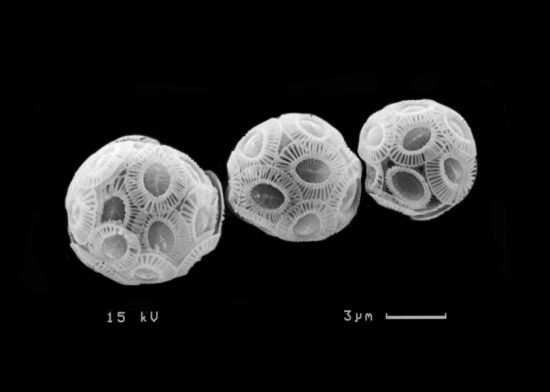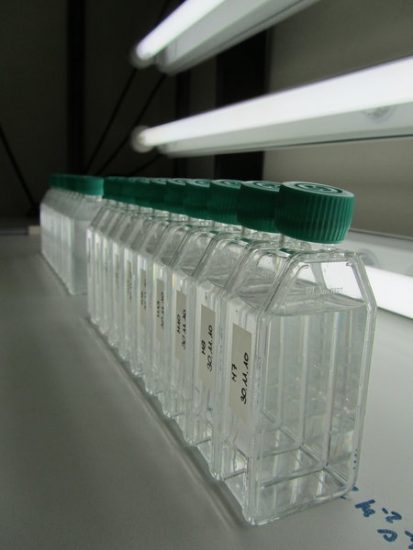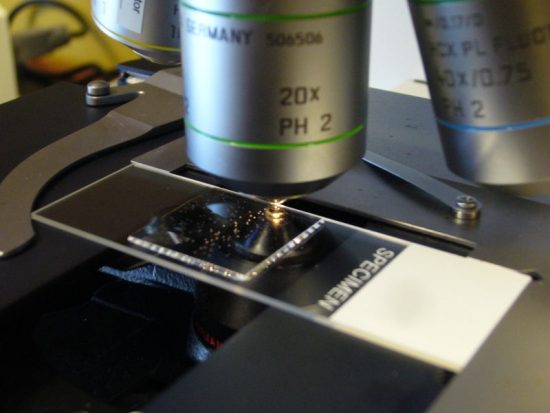




Examining the evolutionary adaptation of unicellular phytoplankton
Through the process of evolution, the coccolithophore Emiliania
huxleyi, a unicellular phytoplankton, has developed the ability to
adapt to the acidification of the oceans. However, a four-year
experiment has shown that its ability for adaptation is apparently not
as extensive as previously thought.
Research conducted by the scientists at GEOMAR Helmholtz Centre for
Ocean Research Kiel and the Thünen Institute of Sea Fisheries has shown
that the organism’s adaptative growth rate did not significantly
improve under elevated carbon dioxide concentrations, even after four
years. In fact, the calcification was actually lower, thereby showing
that the process is more complex than previously thought.
In 2012, scientists at GEOMAR had proven that adaptation was indeed
possible. Now, four years after the experiment started, there has been
little progress made. “The adaptation potential of Emiliania huxleyi
remains lower than originally anticipated. Even after four years, it is
still unable to compensate for the impairment of growth as a result of
acidification,” said Dr Lothar Schlüter, the study's author in German.
The experiment started with a single cell from Raunefjord in Norway. In
the laboratory, the Emiliania huxleyi multipled about once a day
through division. Numerous cultures (which were genetically identical)
were extracted from the isolate. For this study, five cultures were
prepared and placed under constant temperatures but in three different
concentrations of carbon dioxide: the first was a control culture with
present-day conditions, another with conditions that could be obtained
based on the most extreme projections for the end of this century,
and a third at the highest possible degree of acidification.
At the end of the experiment, after four years and 2,100 generations,
the scientists concluded that the cells divided considerably faster
when exposed to ocean acidification. However, their progress improved
only slightly. The results of the study was recently published in the
Science Advances journal. After one year, there was an increase in the
growth rate when compared to the control culture, but unlike other
similar experiments, this did not last. Schlüter said, “Apparently, the
adaptation has its limitations, and the impairment of the growth rate
cannot be fully compensated for by evolution.”
Unicellular calcareous algae like Emiliania huxleyi are formed when
calcite platelets (coccoliths) bind together. These platelets play an
important role in transporting carbon to the deep ocean and influencing
the ability of the oceans to absorb carbon dioxide from the atmosphere
and mitigate the effects of climate change.
Professor Thorsten Reusch, Head of Marine Ecology and coordinator of
the study, said that three years after the start of the experiment, the
production of the calcite platelets was lower in the cultures with
higher carbon dioxide concentrations, compared to the control culture.
They had been surprised that this effect did not take place at the
start of the experiment; if ocean acidification hindered the
calcification process, the production of the calcite platelets might
have been less.
In contrast to the results in 2012 on the first year of the study, the
scientists are now observing the evolution of the negative effects on
calcification of different microalgae.
The effects of the adaptations to ocean acidification are not permanent
– they are reversible. This is demonstrated when the adaptative
cultures are exposed to actual carbon dioxide concentrations – it
causes the production of calcite to change and this is comparable to
the algae that are found in the actual carbon dioxide concentrations.
According to Professor Reusch, the algae reduces the effects of
calcification when there is ocean acidification.
More information: www.geomar.de
Link to study: http://advances.sciencemag.org/content/2/7/e1501660
See also:
Ocean Acidification And Marine Communities
 Mares
Mares 21st July 2016
21st July 2016